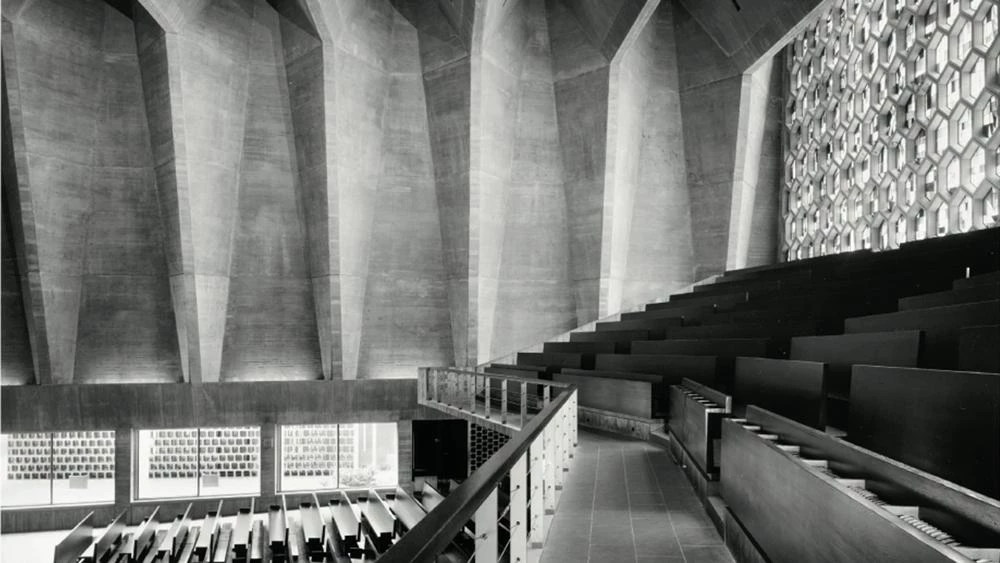
Marcel Breuer died only twenty days before the opening, in July 1981, of his retrospective exhibition at the MoMA in New York. With postmodernity in bloom, his work was lambasted for its unrepentant modernity. Neither as a student at the Bauhaus nor in collaboration with Gropius, and neither during his time as a teacher at Harvard nor when running a global practice from New York did he ever give up the abstraction and heroism of the early Modern Movement.
But this book is not about that first period of his career, famous for his exquisitely weightless tubular chairs. What it does is help make a great figure resurface through ten essays that analyze the major institutional projects he carried out starting in the 1950s, when he simultaneously received two commissions that would catapult him to fame: St. John’s Abbey in Collegeville, Minnesota, and the UNESCO headquarters in Paris.
Barry Bergdoll explains the use of concrete in both, and Jonathan Massey analyzes the project for NYU’s Bronx campus. John Harwood writes on the invention of the prefabricated facade of the IBM building in La Gaude. And Timothy Rohan makes a near-postmodern reading of Breuer’s symbolic and sculptural elements.
Lucy Mulroney’s epilogue tells of Syracuse University’s role in the reinstatement of the last modern master, given its insistence on acquiring, managing, and digitalizing Breuer’s archives. This book stems from a Syracuse seminar on him in which the authors of the texts were the speakers.






